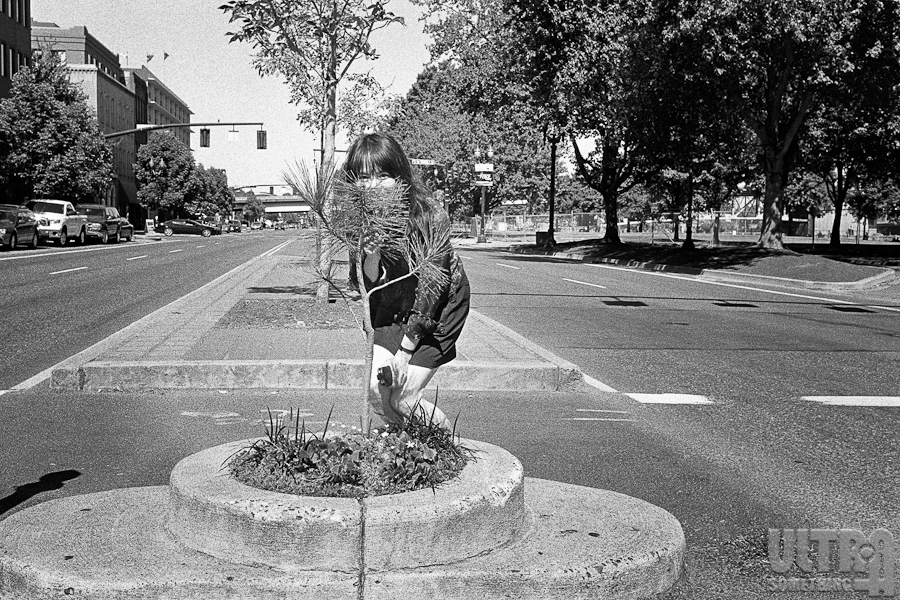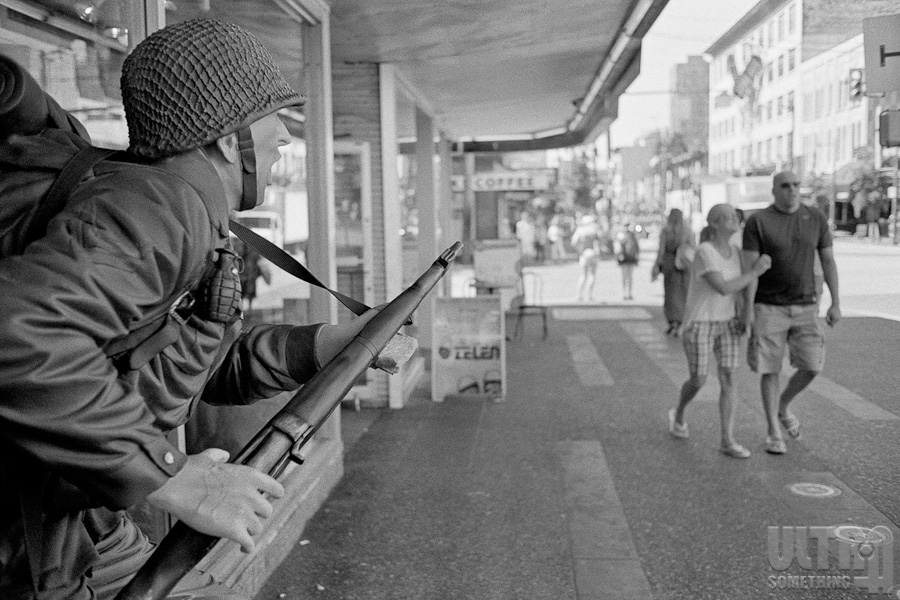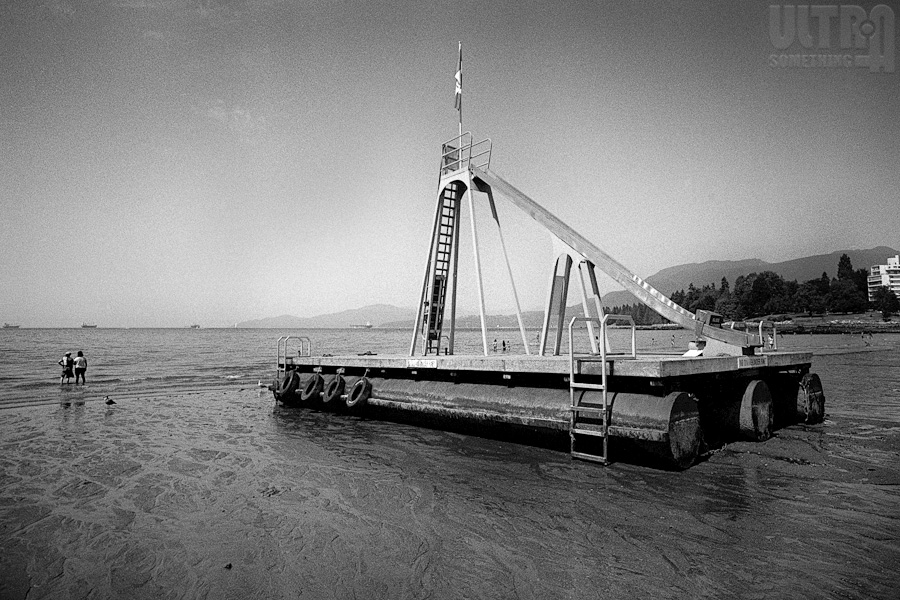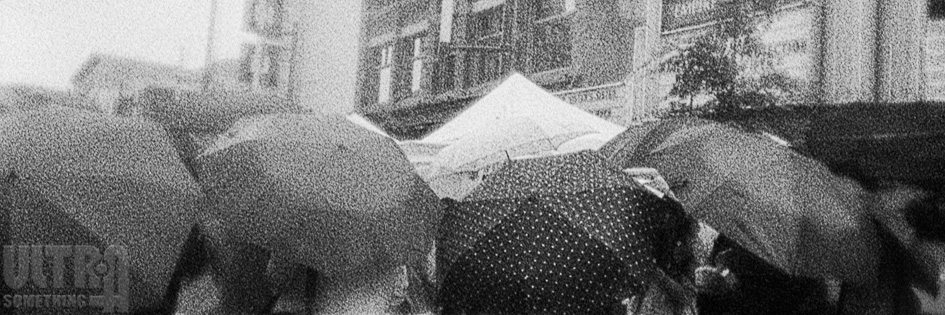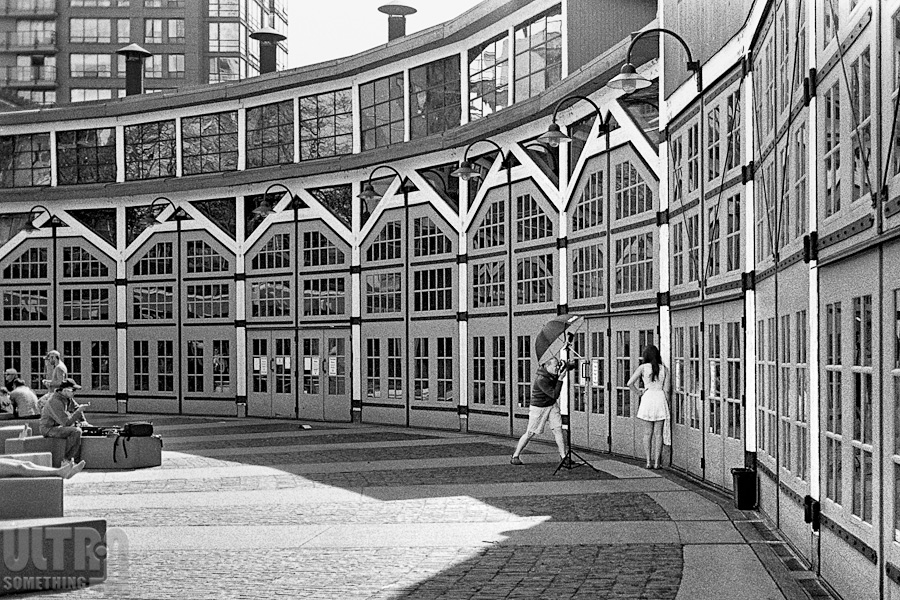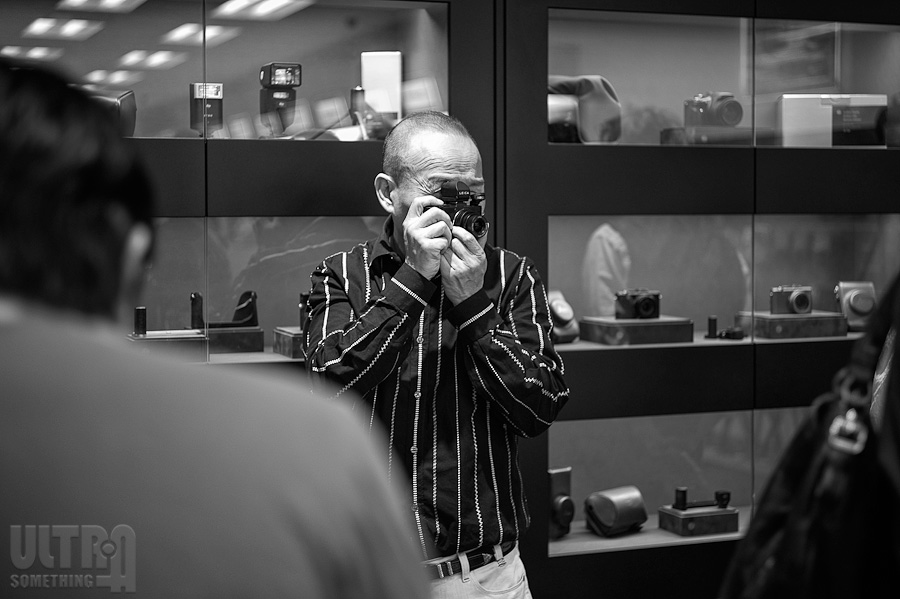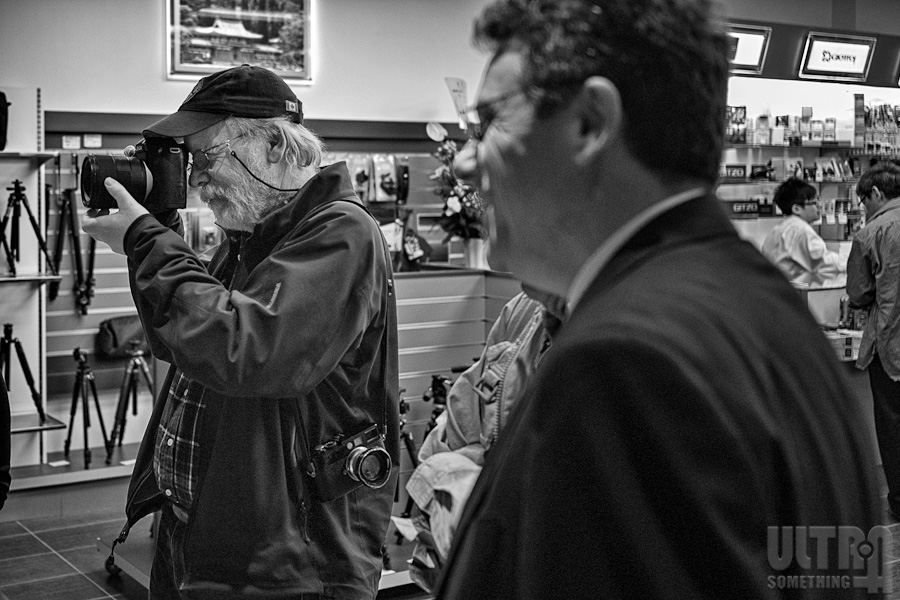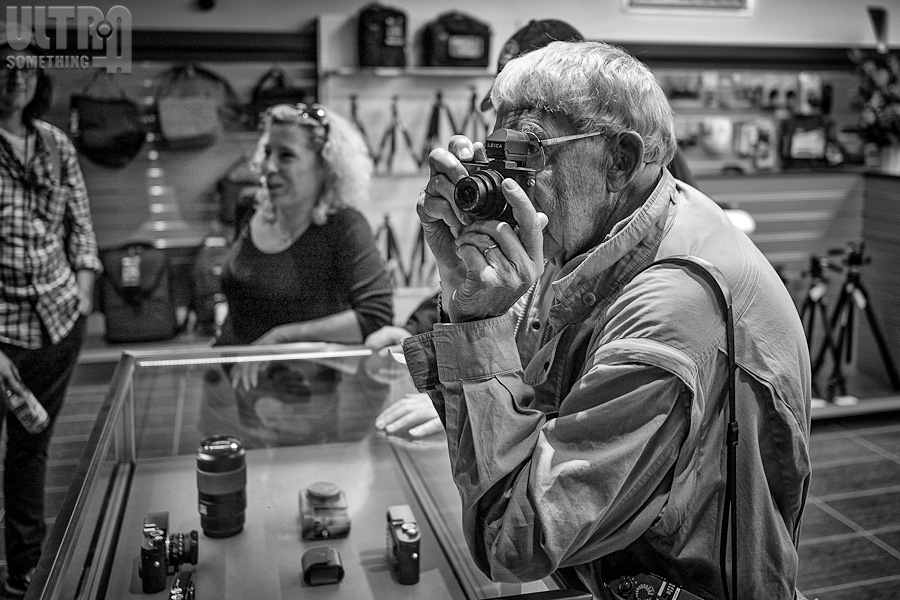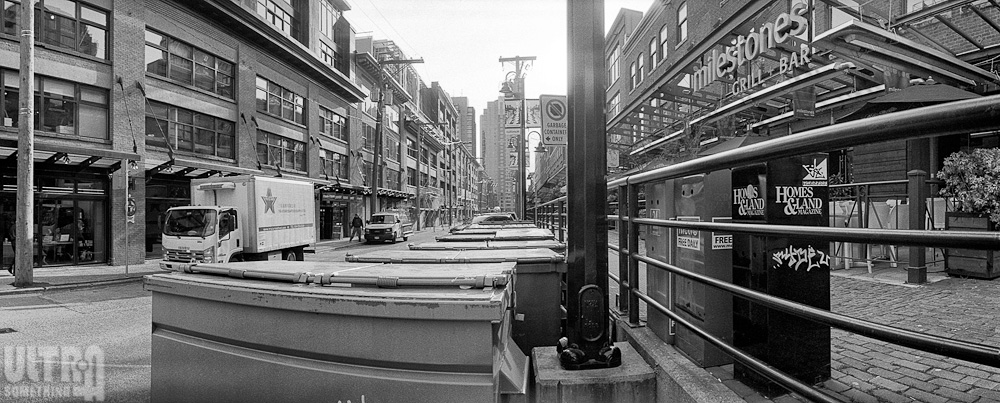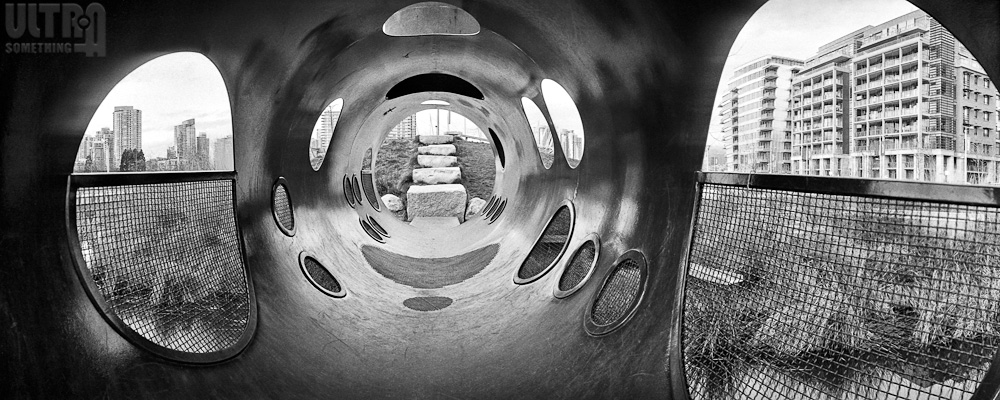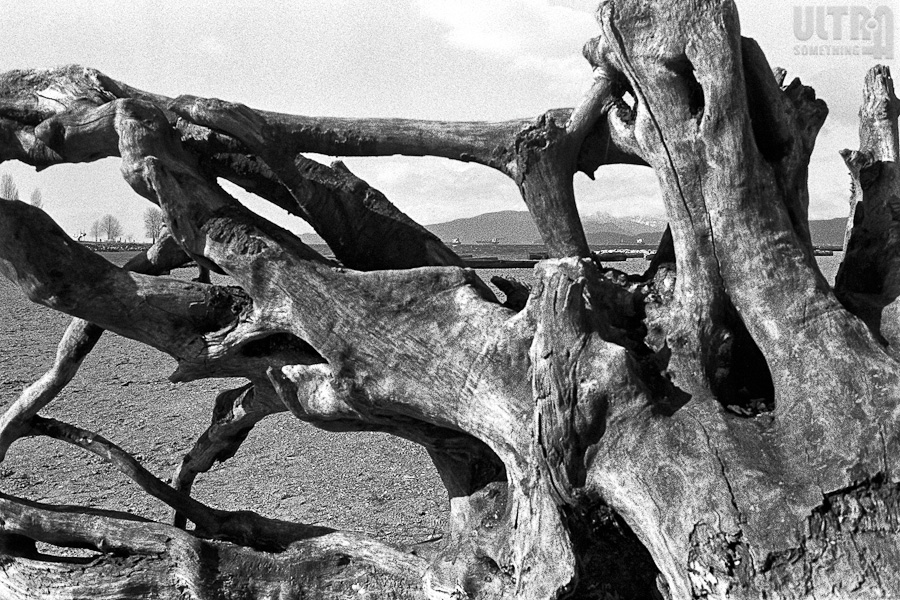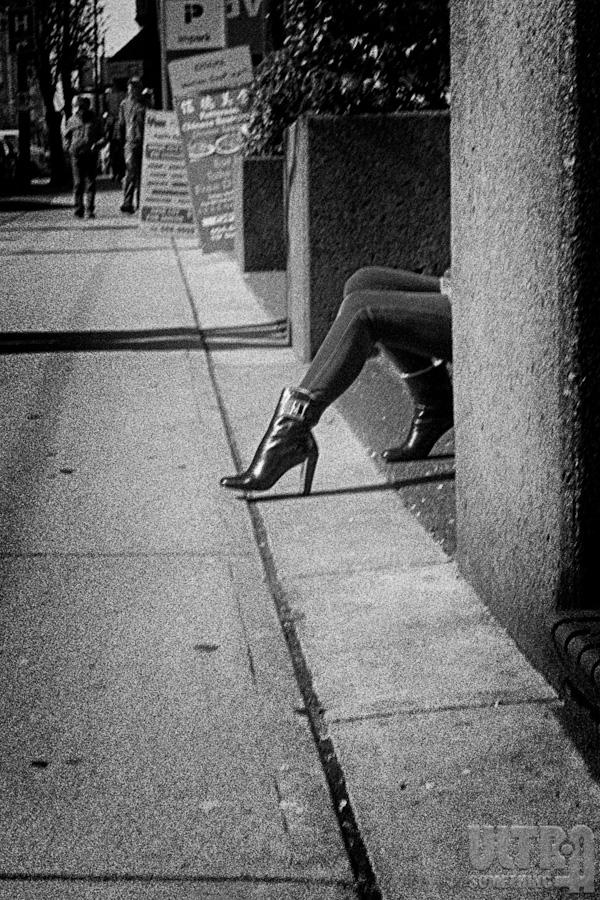Reincarnation
Teleport yourself to any random coordinate on earth, then ask the first person you see if they believe in something they can’t necessarily prove. Some will profess to a belief in ghosts; or Heaven; or fate; or telekinesis; or the likelihood that we humans are nothing more than genetically engineered apes — the byproduct of some precocious alien teenager’s high school biology project. The beliefs will be as varied as the people you ask, but each and every person will cling to at least one fanciful notion.
 We all believe in something we can’t see. We have to. It gives us hope. Personally, I believe in science. Yet even science, at its most extreme, requires substantial leaps of faith. How else should we explain all those severed human heads stored in cryogenic chambers throughout the world?
We all believe in something we can’t see. We have to. It gives us hope. Personally, I believe in science. Yet even science, at its most extreme, requires substantial leaps of faith. How else should we explain all those severed human heads stored in cryogenic chambers throughout the world?
The more spiritual beliefs have always been tougher for me to swallow. Take reincarnation — the belief that the soul doesn’t die, but is instead transferred from one body into another. Born and re-born, it lives throughout all eternity. It’s a romantic idea — beautiful and poetic. But why is it that everyone I’ve known, who claims awareness of a previous existence, professes to have been royalty, famous, or at the very least, epically heroic? It just doesn’t seem statistically feasible that every reincarnated soul has enjoyed such an enviable preincarnation!
Incarnation
My driver’s license reveals that I’m no whipper snapper. I’m old enough to have taken a substantial number of film-based photos, and I’ve done so. Many will likely conclude that my current love for old film cameras is simply the result of an acute case of obstinacy — that I’m merely a luddite with one foot still stuck in the primordial ooze from which I quasi-evolved. It’s a notion nearly as idealized as reincarnation — but it’s false.
In reality, I began extricating myself from film quite early on. In 1992, I purchased a film scanner and Photoshop, and began to process all my photos digitally. In 1994, I stepped on the slippery slope of digital cameras with Apple’s QuickTake 100, and by mid-1998 (and the arrival of the Kodak DC260) I was shooting more digital than film. When I acquired an Olympus E-10 in late 2000, I sold my last remaining film camera.
 So an aversion to digital can’t very well explain why, in the year 2012, I’ve shot more with film cameras than with digital. I’ve already professed to my belief in science and the future of technology, so how could anyone conclude I’m simply clinging to the old, familiar ways?
So an aversion to digital can’t very well explain why, in the year 2012, I’ve shot more with film cameras than with digital. I’ve already professed to my belief in science and the future of technology, so how could anyone conclude I’m simply clinging to the old, familiar ways?
Besides, the whole “Egor is a knuckle dragging Neanderthal” theory doesn’t address the most curious aspect of my film fixation — that my addiction is not to the film cameras from my “glory days,” but to cameras that existed before I was born; cameras like my twin-lens reflexes, and my 1959 Leica M2 and 1952 Leica IIIf.
Initially, I assumed my love for these old cameras was due entirely to a single practical reason — price. With a little bit of digging, you can find some nearly mint gear for next to nothing (and sometimes even for nothing)! The fact is, most people have only a limited amount of space to store discarded items. So, to make room in the garage/attic/basement for last year’s outdated digital camera, people are throwing out last century’s film cameras. This means a careful picker can pick himself a cabinet full of cameras for less than the price of a single, modern digital enthusiast camera. But it occurred to me that this can’t be the only factor influencing which cameras I select . After all, I frequently come across newer, less expensive, and more scientifically advanced film cameras that are ripe for the picking. Yet lately, I’ve been bypassing these technically superior models from the 1980’s and 1990’s — products that I lusted for in my youth — in favor of the more cumbersome mid-century cameras.
Thus, I’ve concluded there can be only one possible reason why I’m running more and more film through cameras that are older than I am — reincarnation.
Preincarnation
 Apparently, in my past life, I was a photographer. Or at least I wanted to be. But unlike my other reincarnated friends, I wasn’t royalty — not even close. I probably owned something like an Argus C3, but lusted after the unattainable offerings from Rollei and Leica. The imprint from my previous incarnation is so strong that it bleeds through into my current incarnation, which rejoices in the fact that it’s now able to realize the dreams of a previous existence. It’s a good thing for me that Leica and Rollei had no concept of built-in obsolescence — these cameras are every bit as functional today as they were when my preincarnation drooled over them at the local cameradashers.
Apparently, in my past life, I was a photographer. Or at least I wanted to be. But unlike my other reincarnated friends, I wasn’t royalty — not even close. I probably owned something like an Argus C3, but lusted after the unattainable offerings from Rollei and Leica. The imprint from my previous incarnation is so strong that it bleeds through into my current incarnation, which rejoices in the fact that it’s now able to realize the dreams of a previous existence. It’s a good thing for me that Leica and Rollei had no concept of built-in obsolescence — these cameras are every bit as functional today as they were when my preincarnation drooled over them at the local cameradashers.
These old cameras are quirky, intractable and eccentric. Each forces the photographer to completely rethink his methods, his beliefs and his approach to photography. They’re not just old school, they’re your grandfather’s old school — or your preincarnation’s.
Those of you who weren’t mid-century photo geeks in your previous life will likely prefer the 1‑button simplicity of your iPhone cameras. Those who are photo geeks in this lifetime, but weren’t so geeky in your previous existence, simply want a “bigger” iPhone — something like a DSLR that still provides 1‑button simplicity, but packs a whole lot more processing power, pixels and optical quality behind that button. Me? I gotta push me some buttons. Lots of buttons! And throw in some dials and levers while you’re at it. I want to control the camera. I don’t want it to control me.
Sometimes the lives we lead are our own. Sometimes, we’re still living the lives of our preincarnates. So for those with photographic preincarnations similar to mine (or for the entertainment of those who are easily entertained), I present the following discussions about how two such dream cameras from a previous era fit into the current one.
A Reincarnate’s View of the Rolleicord
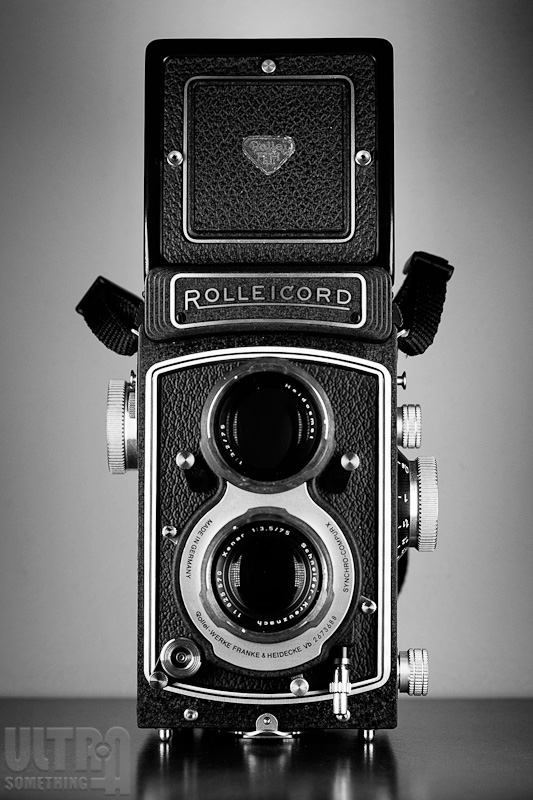 By the time I’ve popped open its shade, wrapped my head around the reversed image on the ground glass, flipped up the magnifier, then twiddled the knob to achieve the precise focus necessitated by medium format film, my subject is already home having dinner. Good thing, too — because they’d grow mighty hungry waiting for me to futz around with the exposure controls.
By the time I’ve popped open its shade, wrapped my head around the reversed image on the ground glass, flipped up the magnifier, then twiddled the knob to achieve the precise focus necessitated by medium format film, my subject is already home having dinner. Good thing, too — because they’d grow mighty hungry waiting for me to futz around with the exposure controls.
On the Rolleicord, shutter speed and aperture are set with a pair of fiddly little metal protrusions that extend from a single exposure dial encircling the taking lens. These protrusions are locked together and spin in unison — so rotating the shutter speed tab simultaneously changes the aperture, and vice-versa. To uncouple them, you need to press the tab to the lens’ right, which allows it to turn independently from the tab on the lens’ left.
This default linking of aperture and shutter speed probably seems strange to anyone whose preincarnated self wasn’t a photographer during the first half of the 20th century. But it actually makes sense. Since these cameras come from an era when people could actually function without light meters, camera makers devised a simple, single-number designation to represent exposure — the “EV” number. EV, which stands for Exposure Value, is a ridiculously easy way to set exposure. Using the pictograms on the back of the camera, or the pictograms on a box of film, or a simple little chart you keep in your mind, any photographer can properly expose any scene by simply looking at it and setting their camera to the proper Exposure Value. Got Tri-X and a sunny day? That’s EV15. Heavily overcast? Probably EV12. There are many combinations of aperture and shutter speed that will result in the same exposure value. For example, 1/500 @ f/4, 1/250 @ f/5.6, 1/125 @ f/8 and 1/60 @ f/11 will all produce the exact same exposure — EV13.
Cameras like the Rolleicord put primary emphasis on setting the exposure value, while treating shutter speed and aperture as “fine tuning” controls. The theory is that, first and foremost, you need to get the right exposure. Then, once you’ve dialed in the right exposure, you can adjust either the shutter speed or aperture to give your photos a certain look, but without worrying about altering that exposure.
 That’s why the biggest numbers on the Rolleicord’s exposure dial — the ones beneath the tab on the lens’ right — are EV numbers. Pressing and turning that tab allows the photographer to set the desired exposure value. Then, if the photographer wants to vary depth of field, he can rotate either tab to set the desired aperture, and the coupled dial automatically adjusts the shutter speed to insure the EV doesn’t change. Similarly, if the photographer is more concerned with freezing motion, he can rotate the dial to a faster shutter speed, and the aperture will open to compensate. It’s easy to see why cameras no longer operate this way — it made too much sense! By suppressing the concept of EV numbers, newer cameras forced people to think of exposure not as a single number, but as a complex matrix of f/stop and shutter speed combinations, which insured everyone would need to buy a new camera with a new-fangled light meter in order to save them from the “complexities” of exposure.
That’s why the biggest numbers on the Rolleicord’s exposure dial — the ones beneath the tab on the lens’ right — are EV numbers. Pressing and turning that tab allows the photographer to set the desired exposure value. Then, if the photographer wants to vary depth of field, he can rotate either tab to set the desired aperture, and the coupled dial automatically adjusts the shutter speed to insure the EV doesn’t change. Similarly, if the photographer is more concerned with freezing motion, he can rotate the dial to a faster shutter speed, and the aperture will open to compensate. It’s easy to see why cameras no longer operate this way — it made too much sense! By suppressing the concept of EV numbers, newer cameras forced people to think of exposure not as a single number, but as a complex matrix of f/stop and shutter speed combinations, which insured everyone would need to buy a new camera with a new-fangled light meter in order to save them from the “complexities” of exposure.
Having come to terms with the Rolleicord’s exposure methodology, the camera offered one additional surprise — the shutter needs to be cocked manually before it will fire. In most semi-modern cameras, advancing the film also cocks the shutter. Not so with the Rolleicord. I can’t tell you how many times I’ve attempted to take a photo, only to realize I hadn’t cocked the shutter. Actually, I probably could tell you — but I’d be too embarrassed to.
And speaking of the shutter, Rollei seems to have forgotten that a camera needs a shutter release button. In order to actually take a photo, you need to push the shutter cocking lever horizontally back to its uncocked state. If that bugs you, then you can always try to find a stubby little mechanical shutter release button and screw it into the socket located to the left of the lens. Yes, I said left. Unlike every other camera you’ve ever used, you’ll need to train your left finger to take photos with the Rolleicord.
And yet, in spite of all its finickiness, I dearly love to shoot with the Rolleicord. In my hands, it’ll never be an efficient camera for candid street shooting, but that’s OK. I need to grow. Because I’m so enamored with the quality of images that come out of the Rolleicord, and because it’s not quite fast enough to shoot dynamic subjects with ease, the camera forces me out of my comfort zone — if I want to take photos of people, it’s easier if I just ask them! Somehow, I think this is probably good for me. But as much as I like the Rolleicord, I’d still rather have a Rolleiflex. Alas, some things don’t change from one life to the next — in my previous incarnation I couldn’t afford a Rolleiflex and in this incarnation, I still can’t afford a Rolleiflex. Maybe in the next life…
A Reincarnate’s View of the Leica IIIf
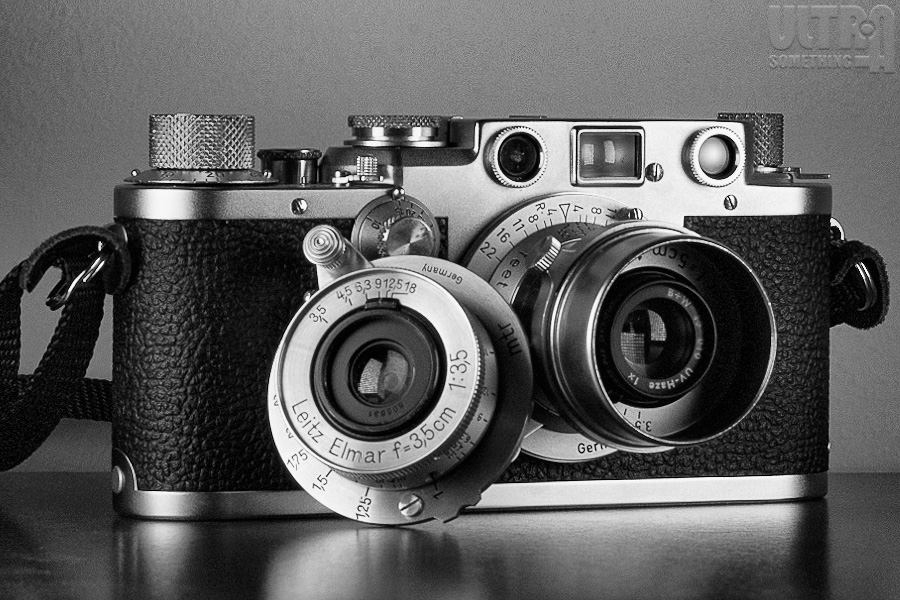 My 1952 Leica IIIf is a direct descendent of the 1925 Leica I — a camera that ushered in the era of 35mm photography and revolutionized the idea of what cameras are and could be. Cameras of this lineage are colloquially known as “Barnacks,” in honor of their inventor, Oskar Barnack.
My 1952 Leica IIIf is a direct descendent of the 1925 Leica I — a camera that ushered in the era of 35mm photography and revolutionized the idea of what cameras are and could be. Cameras of this lineage are colloquially known as “Barnacks,” in honor of their inventor, Oskar Barnack.
While there’s no denying that these are unbelievably beautiful cameras, they do possess a number of quirks, which I prefer to think of as “anachronistic charms.” You’ll stumble upon the camera’s first idiosyncrasy before you even consider your first exposure — during film loading. I’m not talking about the fact that this camera, like the M-series that succeeded it, loads from the bottom. That’s only slightly idiosyncratic. No, I’m talking about the fact that Barnacks require your film to have a 10cm leader, even though all modern film comes with a 4cm leader. So before you’ve even loaded your camera, you’ve already pulled out the scissors and are engaged in a fun little arts & crafts project.
Once you’re up and running, you’ll bump into a second idiosyncrasy — dual viewfinders! Again, like the M-series that succeeded it, the Leica III is a rangefinder. But unlike the M-series, which integrates the rangefinder into the viewfinder, the Barnacks keep them separated — you peek through one window to focus, then shift your eye over to a second window for framing. Like I said, this camera is positively dripping with anachronistic charm.
If you think it gets more standard from this point forward, you’re in for a surprise. Let’s talk about shutter speeds. Most cameras space their shutter speeds at one stop intervals — beginning at 1/1000s and stepping down to 1/500, 1/250, 1/125, 1/60 and 1/30. That makes it easy to adjust the exposure on these cameras without actually looking at the dial — you simply count the clicks, with each click equalling one stop. My Leica IIIf? It’s all over the map. It begins in familiar territory, dropping from 1/1000 to 1/500, but then it drops to 1/200s — a gap of 1 1/3 stops. From there it drops to 1/100 (1 stop), 1/60 (2/3 stop), 1/40 (2/3 stop) and 1/30 (1/3 stop) before forcing you to use a second dial to set slower shutter speeds — a second dial that, I might add, arranges those speeds in a seemingly random, non-sequential order, which makes the selection of slower shutter speeds a bit like a scavenger hunt.
 But I’ve definitely saved the quirkiest operation for last — aperture control. This is almost too crazy to be called “eccentric.” Unlike modern mechanical cameras that have nice big aperture rings surrounding the lens, the lenses for these cameras have little aperture tabs — teeny-weeny microscopic tabs that sit flush with the face of the lens. These diminutive little widgets actually forced me to grow my fingernails longer than I like, just so I’d be able to set the aperture on my Barnack-era lenses without using a stylus! Furthermore, once you put a hood on the lens, you really will need some kind of long pointy stick to change f/stops. And filters? Unless you can actually find 19mm filters (which are rarer than fertilized dodo eggs) you’ll need to use larger filters that cover the entire face of the lens. Of course, that means the filter covers the aperture tab completely, thus requiring you to remove it every time you need to change aperture. And at this point, it gets even weirder! My 1946 35mm Elmar lens comes from the days before aperture stops became standardized. That means, instead of f/4, f/5.6, f/8, f/11, f/16 and f/22, my 35 Elmar gives me demarcations for f/4.5, f/6.3, f/9, f/12.5 and f/18.
But I’ve definitely saved the quirkiest operation for last — aperture control. This is almost too crazy to be called “eccentric.” Unlike modern mechanical cameras that have nice big aperture rings surrounding the lens, the lenses for these cameras have little aperture tabs — teeny-weeny microscopic tabs that sit flush with the face of the lens. These diminutive little widgets actually forced me to grow my fingernails longer than I like, just so I’d be able to set the aperture on my Barnack-era lenses without using a stylus! Furthermore, once you put a hood on the lens, you really will need some kind of long pointy stick to change f/stops. And filters? Unless you can actually find 19mm filters (which are rarer than fertilized dodo eggs) you’ll need to use larger filters that cover the entire face of the lens. Of course, that means the filter covers the aperture tab completely, thus requiring you to remove it every time you need to change aperture. And at this point, it gets even weirder! My 1946 35mm Elmar lens comes from the days before aperture stops became standardized. That means, instead of f/4, f/5.6, f/8, f/11, f/16 and f/22, my 35 Elmar gives me demarcations for f/4.5, f/6.3, f/9, f/12.5 and f/18.
Obviously this isn’t a camera and lens combo for either the mathematically or mechanically challenged. Heck, I’m a nimble-fingered musician with an electrical engineering degree, and I still don’t possess enough manual or mathematical dexterity to change exposure quickly in dynamic lighting conditions.
Consider the following photo of a Vancouver alley. There were people in this alley when I first set about trying to take this photo. But by the time I’d mentally translated my known shutter speed and aperture settings into “Barnakese,” removed the lens hood and fiddled with finding a fingernail long enough to wiggle the little aperture tab to a new position, the alley was barren. But after going through all these gymnastics, there’s no way I was walking away — so I snapped a photo anyway.
But just as with the Rolleicord, I truly love to photograph with the Leica IIIf. In spite of its peculiarities (or, perhaps, because of them), I find the camera actually inspires me to try and take photos worthy of its craftsmanship, ingenuity and pedigree. Lately, because of its diminished size and weight, I’ve been using it as my walk-around camera — snapping up the sort of little, personal moments that the less photographically neurotic usually grab with their cell phones.
And so, at this point, my previous life is complete. And having satisfied the lustful desires of my previous incarnation, I can hardly wait to speed through this life and begin my next one — maybe then I’ll be able to afford a nice, used Leica M-Monochrom…
©2012 grEGORy simpson
ABOUT THESE PHOTOS: “Classics,” “Where the People Were” and “Hiding in Mill Ends Park” (which, by the way, is officially classified as the smallest park in the world) were shot with a Leica IIIf and a 35mm f/3.5 Elmar thread mount lens on Tri-X at ISO 400, developed in a 1:50 solution of Rodinal. “Hawthorne Bridge, Portland Oregon” was shot with a Leica IIIf and a 50mm f/3.5 collapsible Elmar thread mount lens on Tri-X at ISO 400, developed in a 1:35 solution of Rodinal. “Preincarnation 1,” “Cannabis Day Couple 1” and “Cannabis Day Couple 2” were shot with a Rolleicord Vb (which features an f/3.5 Xenar lens) on Tri-X at ISO 400, developed in a 1:35 solution of Rodinal. “Preincarnation 2” was shot on a Rolleicord Vb with Fuji 160c film at ISO 160, which I stand-developed in a 1:100 solution of Rodinal. The three product shots were taken with a Leica M-Monochrom using a variety of different lenses.
If you find these photos enjoyable or the articles beneficial, please consider making a DONATION to this site’s continuing evolution. As you’ve likely realized, ULTRAsomething is not an aggregator site — serious time and effort go into developing the original content contained within these virtual walls.






